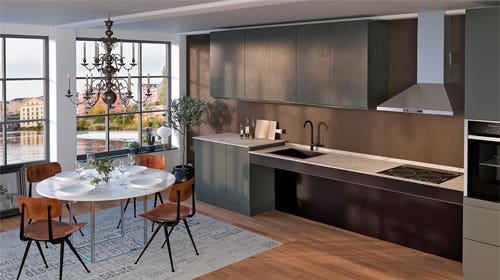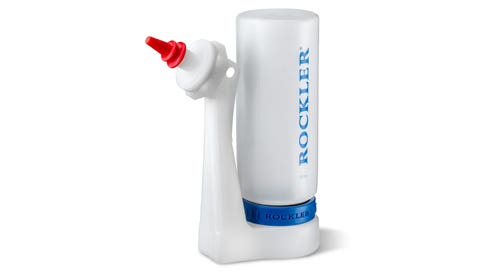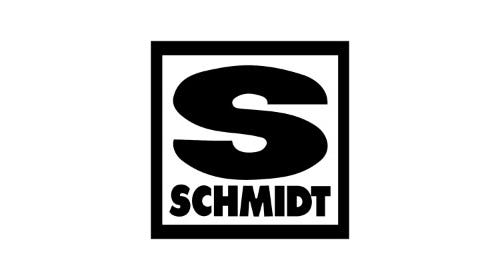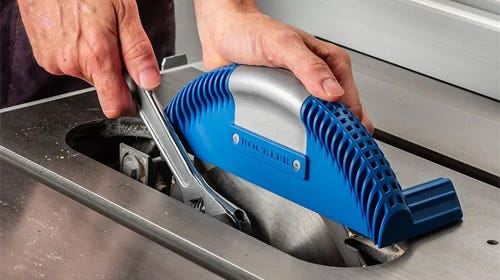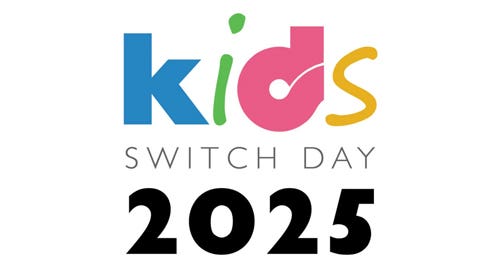Wood scores well at German trade fair
More demand for solid wood furniture, especially made from oak, walnut and cherry, were noted in a trend survey conducted at Imm Cologne, a furniture industry trade fair held Jan….
More demand for solid wood furniture, especially made from oak, walnut and cherry, were noted in a trend survey conducted at Imm Cologne, a furniture industry trade fair held Jan. 18-23 in Cologne, Germany.
The trends, as reported by the Association of the German Furniture Industries, include:
Sustainability
Sustainability is becoming an increasingly important component of the quality factor. There is a growing demand for solid wood furniture and furniture sales staff are increasingly likely to be asked which materials have been used to make a certain piece. People are becoming increasingly sensitive in their approach to resources. The industry is coming up with more and more material mixes that can be separated into mono-materials at the end of their life cycle. This consumer attitude is rooted in the health issue. It thus comes as no surprise that material honesty is playing a larger role in furniture construction.
People are seeking organic options in the food sector, nature in their leisure activities and sustainability in consumer goods.
Shapes
Upholstered furniture is getting smaller again. But the functions are here to stay. Folding a certain element down and changing the original purpose isn't just fun, it makes sense, too. The collections still feature big sectional seating arrangements too, of course, but the industry is aiming to cater to people with less space available to them as well. For the most part, that means smaller single-person households and export markets - particularly countries with less living space per capita, such as China and Japan.
Wall units are standard. Individually configurable high boards, low boards or display cabinets can provide the right option for every taste and are the preferred location for flat-screen televisions. As a result, contemporary wall units tend to be slender so as to enhance the impression of spaciousness.
Colors
White will remain the megatrend color for furniture. White can be combined with any other color and is reticent, almost neutral. In the face of so much white, expressive plain colors are being used to create accentuation in the form of scatter cushions, accessories or walls painted in powerful hues. The retro patterns currently available from wallpaper designers or other colorful designs are an equally good fit with white furniture. The motto: don't be afraid of color, as long as the combination is pleasant.
When it comes to monocolor covering fabrics, blue shades from petrol all the way to mint are particularly popular, as is the vast spectrum of natural hues. The latter are also very much in demand for the surfaces of storage furniture or kitchen cabinets. Occasionally, the 1970s are experiencing a revival in the form of orange and apple-green shades. Finally, black - the classic of the 1980s - is making a comeback in the upholstered furniture segment, as well as for storage furniture.
Patterns
Stripes, floral fabrics, abstract graphics: in terms of patterns, covering fabrics are presenting an extremely diverse face. Ornamentation is another popular theme for opulent patterns. The haptic experience plays a major role as far as fabrics are concerned. Rather than being smooth, many fabrics are featuring a relief-like texture that issues an irresistible invitation to take a seat and nestle down. The user becomes one with the piece of furniture he happens to be sitting or lying on. Snuggling continues to play an important role.
Surfaces
There is a very definite tendency towards material honesty. And when it comes to being honest, natural materials are best. The trend is towards glass, stone, wood and certain metals like stainless steel. In the coming season, glass will be a popular material for the fronts and doors of kitchen cabinets, wall units and wardrobes. We will be seeing thick glass for tabletops and satin glass for translucent cabinet doors.
Veneered or solid stone is being used for work surfaces. Precious materials with a surface that is pleasant to the touch are experiencing a boom. Leather will also be playing a more important role in the coming furniture season. Usually as a cover for upholstered furniture, of course, but also as an inlay for drawers or tabletops. Up to a point, however, the use of leather will be restricted by marked price increases.
Wood
Good old oak is experiencing a veritable boom. Whether it's used for tables, beds or cabinets, oak is modern because it is being left in its original mellow color and no longer being stained in dark, rustic hues. Walnut will maintain its important status. It radiates a sense of value and elegance. High-grade cherry with its delicate, reddish hues is playing a prominent role. Usage of domestic wood, including fruitwood, is becoming more important to buyers. The lighter color spectrum continues to include beech, maple, ash, alder and birch.
Light
The light bulb is slowly disappearing from the household and being replaced by state-of-the-art LED luminaries. LEDs have the advantage of being highly energy-efficient, not getting hot and having a very long life. As a result, the furniture industry is making increasing use of LEDs, for example in display cabinets, as shelf or cabinet lighting or edging for sideboards. And LEDs are being used for popular accessories like fairy lights too.
The latest development towards less expensive, organic light-emitting diodes, or OLEDs for short, allows manufacturers to produce not just ultra-thin screens but large-area lighting for shelf panels or large-area ambient lighting. Good light and energy-efficient light sources - often concealed and shining as if by magic - are a top trend that is here to stay.
Living Kitchen
The kitchen is very much alive. Professionalism is a trend that has long since arrived. Workflows can be optimized via the meaningful allocation of furniture and light is being targeted to illuminate worktops and eating areas.
When it comes to electrical appliances, or so-called white goods, energy efficiency is a major theme. A growing number of consumers are becoming increasingly aware of the need to save both energy and water - partly because it is easy on the wallet, but also because it is easy on the environment. Energy-efficient and quiet kitchen appliances will be tomorrow's norm. In the next kitchen furniture season, we will also see a shift towards a simple, unostentatious design vocabulary. Simple means elegant and unobtrusive - the kind of style you never get tired of looking at. And that's a good thing, for kitchens are extremely durable consumer goods.
The latest trend in the kitchen sector is towards open shelving and lots of glass for cabinet doors, work surfaces and wall tiles. The live-in kitchen is the most conclusive proof of all that the various areas of the home are merging and people's expectations of their interiors are changing.
Source: Association of the German Furniture Industries / Verband der Deutschen Möbelindustrie e.V.


